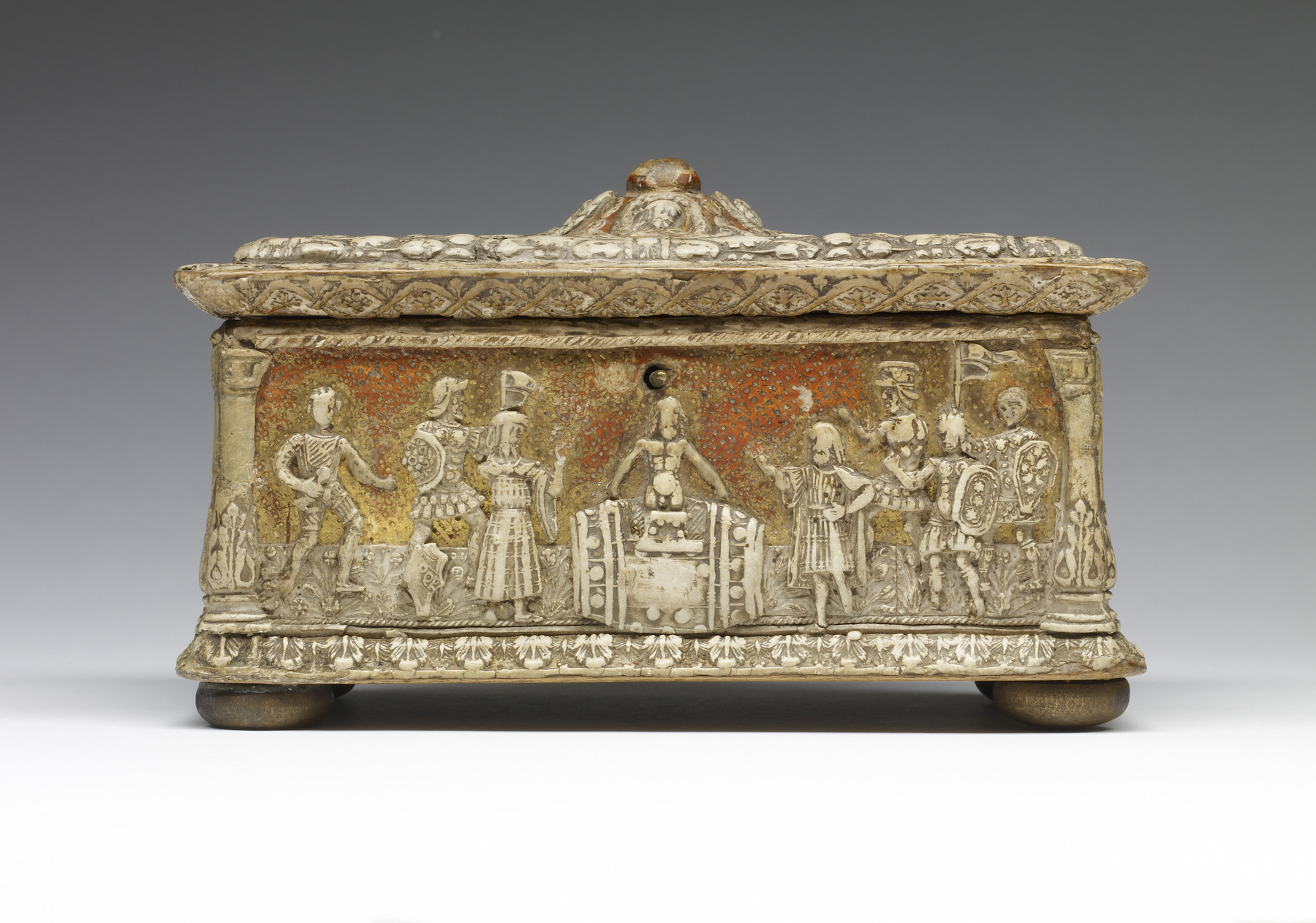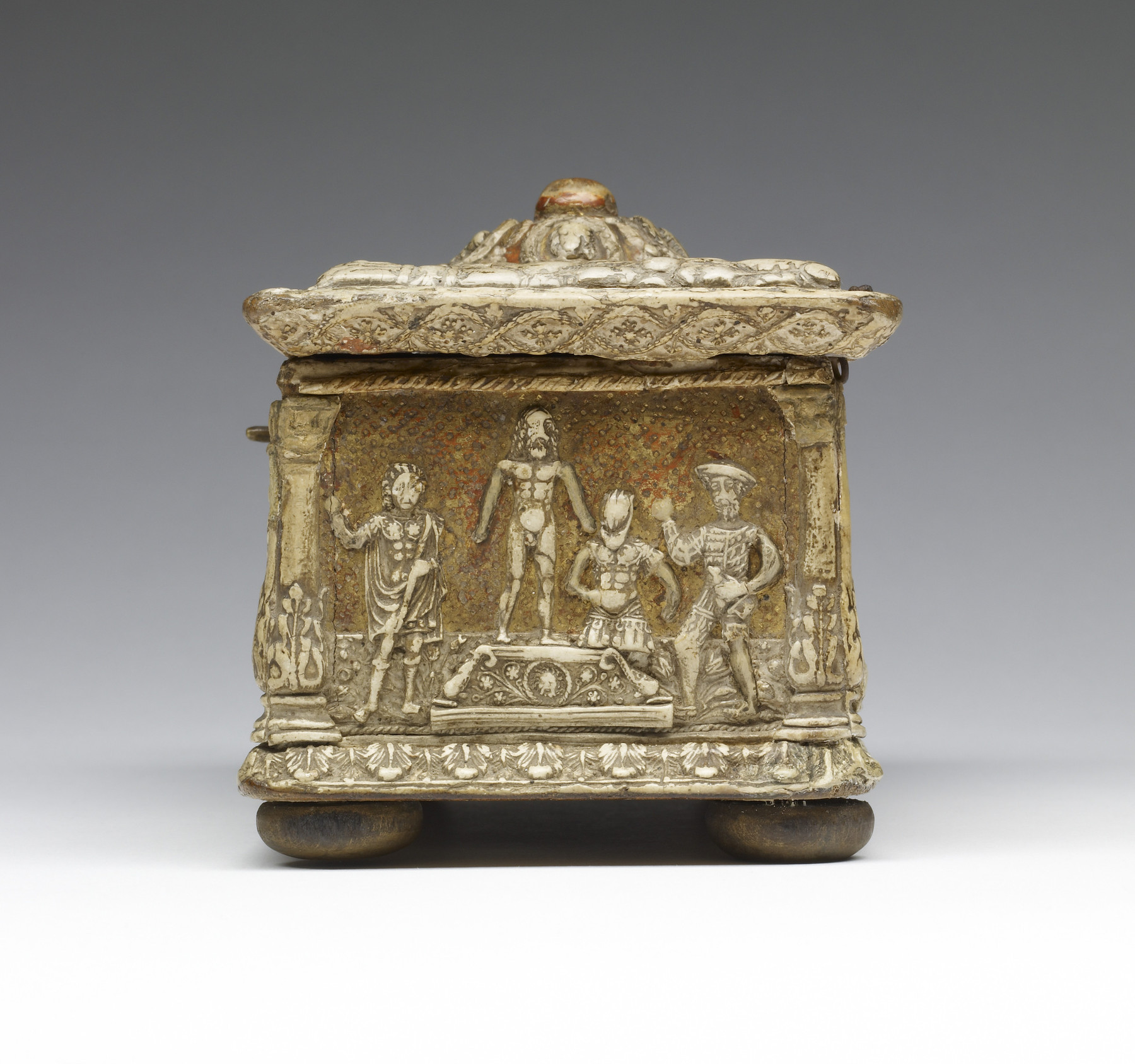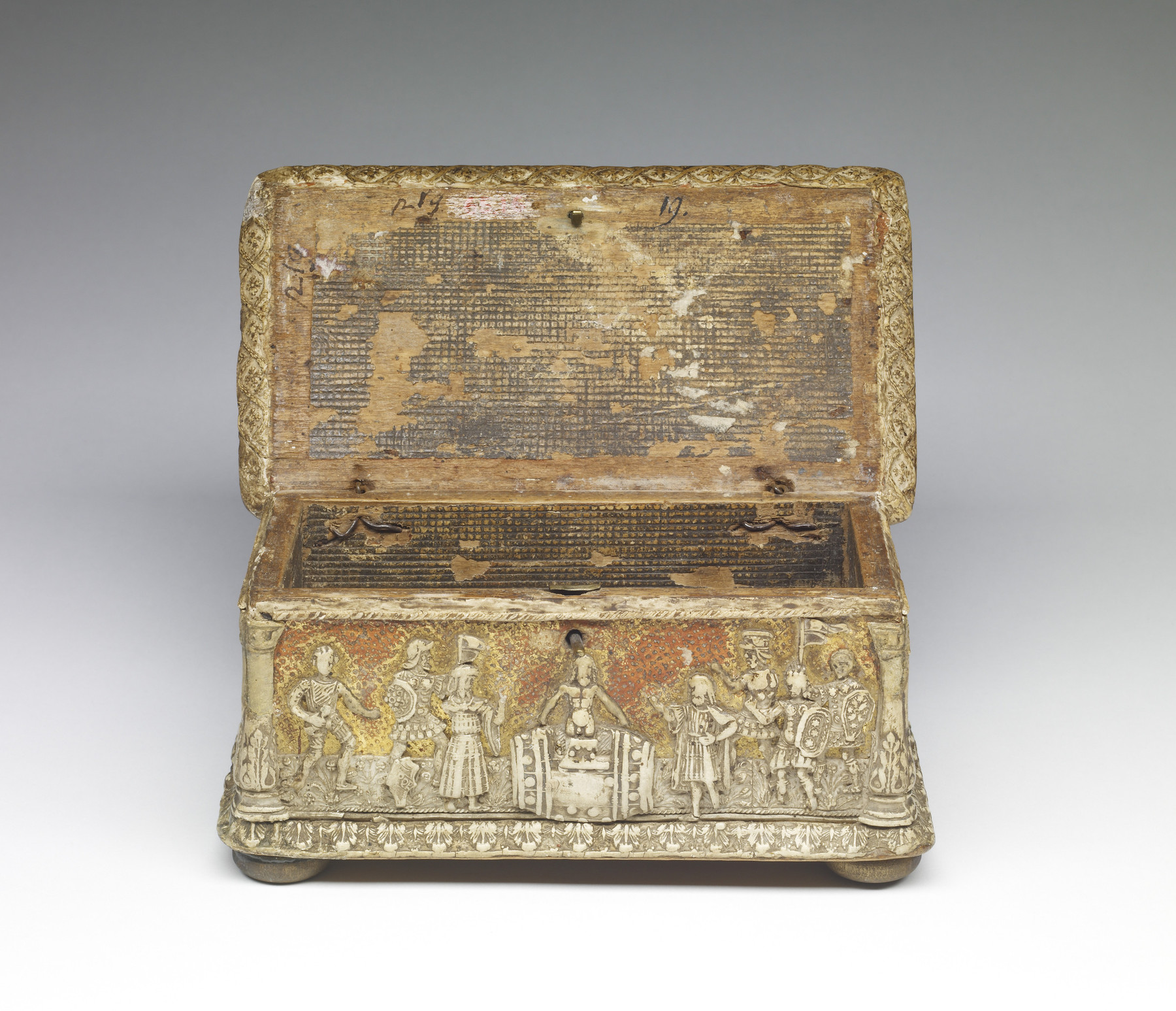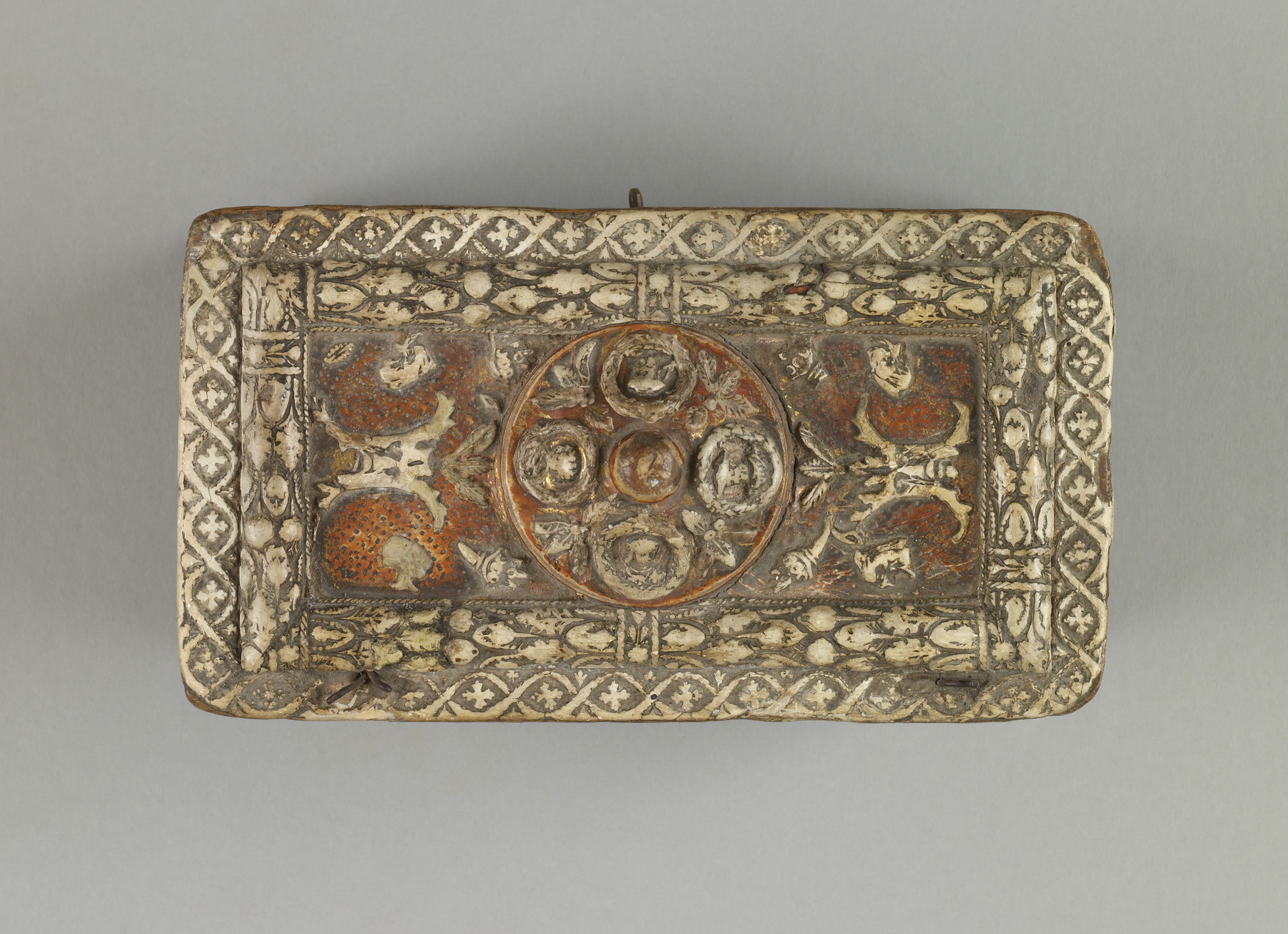Small Casket with Scenes from Roman History
Lockable caskets like this one were highly valued for their decorations and would have held small valuables, such as its owner's rings or personal seal. The sides of this casket are decorated with scenes from Roman history. On the front is an episode described by a number of Classical Roman authors, including the poet Horace (65-8 BCE), in which Marcus Atilius Regulus (299-250 BCE) is tormented by the Cartheginians after being placed in a barrel and hammered with iron nails. On the two short sides, Brutus calls on the Romans, and the head of Pompey is brought to Caesar. On the back, two scenes, possibly Lucretia stabbing herself, and Virginia's father lamenting over her body, are separated by a pilaster. All of these episodes emphasized the importance of personal and national honor, themes that would have been easily recognized by educated patrons in Northern Italy.
Rather than being carved directly onto the casket, the decorations are a kind of pastework, called "pasitglia" in Italian, that is made primarily of white lead- and moulded into forms which were then glued to the surface, allowing workshops to reproduce such ornamentation quickly and in great quantity. This casket was made by the Venetian workshop known by art historians as that of the "Moral and Love Themes." This workshop was the most productive of perhaps seven workshops in Venice, active between 1503 and 1530. This period is roughly parallel to that of ivory caskets made by the Embriachi workshops in Venice, represented in the Walters collection by 71.242. After this period, the fashion for pastiglia and ivory caskets seems to have died out.
Provenance
Provenance (from the French provenir, 'to come from/forth') is the chronology of the ownership, custody, or location of a historical object. Learn more about provenance at the Walters.
Fernando. Ongania, Venice [date and mode of acquisition unknown]; Henry Walters, Baltimore [date and mode of acquisition unknown]; Walters Art Museum, 1931, by bequest.
Conservation
| Date | Description | Narrative |
|---|---|---|
| 4/1/2018 | Treatment | cleaned; examined for condition; filled; inpainted; loss compensation; repaired; surface cleaned |
Geographies
Italy, Venice
(Place of Origin)
(Place of Origin)
Measurements
Overall: 3 15/16 x 6 3/4 in. (10 x 17.1 cm)
Credit Line
Acquired by Henry Walters
Location in Museum
Accession Number
In libraries, galleries, museums, and archives, an accession number is a unique identifier assigned to each object in the collection.
In libraries, galleries, museums, and archives, an accession number is a unique identifier assigned to each object in the collection.
65.16




















